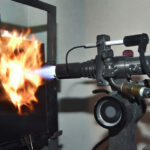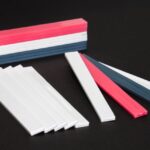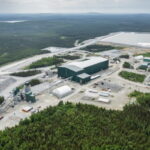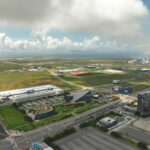ASIA ELECTRONICS INDUSTRYYOUR WINDOW TO SMART MANUFACTURING
LG Chem Discovers New Solution to Thermal Runaway
LG Chem has announced that its Platform Technology R&D team has developed a temperature-responsive Safety Reinforced Layer (SRL), a material designed to suppress thermal runaway. In collaboration with Professor Lee Minah’s team from the Department of Battery Engineering at POSTECH, the material was analyzed. Meanwhile, safety verification was conducted in partnership with LG Energy Solution.
The research findings were published online in the September edition of Nature Communications, one of the world’s leading scientific journals.

Characteristics of the Thermal Runaway Suppression Material
Particularly, the thermal runaway suppression material developed by LG Chem is a composite material that changes its electrical resistance based on temperature. It acts as a “fuse” that blocks the flow of electricity in the early stages of overheating.
The research team created this thermal runaway suppression material in the form of a thin layer – just 1μm thick. It is positioned between the cathode layer and the current collector (an aluminum foil that acts as the electron pathway) in the battery. When the battery’s temperature rises beyond the normal range, between 90°C and 130°C, the material reacts to the heat. Then, it alters its molecular structure and effectively suppresses the flow of current.
Primarily, this thermal runaway suppression material is highly responsive to temperature. Specifically, this is shown by its electrical resistance increasing by 5,000 ohms (Ω) for every 1°C rise in temperature. Also, the material’s maximum resistance is over 1,000 times higher than at normal temperatures. Additionally, it also features reversibility, meaning the resistance decreases and returns to its original state. This allows the current to flow normally again once the temperature drops.
Safety Verification Tests
Mainly, thermal runaway, a leading cause of electric vehicle battery fires, occurs when the cathode and anode inside the battery unintentionally come into direct contact. Eventually, it causes a short circuit and generates heat. Within seconds, the temperature can rise to nearly 1,000°C, leading to a fire. The thermal runaway suppression material is expected to be effective in preventing fires by quickly blocking the reaction path at the early stages of overheating.
In both battery impact and penetration tests, the batteries equipped with the thermal runaway suppression material either did not catch fire at all or extinguished the flames shortly after they appeared, preventing a full-blown thermal runaway event.
Also, in a penetration test involving mobile Lithium Cobalt Oxide (LCO) batteries, where a nail was used to puncture the battery, only 16% of regular batteries did not catch fire. However, none of the batteries with the thermal runaway suppression material experienced any fire incidents.
Meanwhile, in an impact test on Nickel Cobalt Manganese (NCM) batteries for electric vehicles, where a 10kg weight was dropped onto the batteries, all of the standard batteries caught fire. In contrast, 70% of the batteries equipped with the thermal runaway suppression material did not ignite at all. However, while the remaining 30% saw flames, they were extinguished within seconds.
While previous methods involved placing temperature-responsive materials inside the battery cell, they often faced issues with slow reaction times or reduced energy density. LG Chem, however, has successfully developed a material that resolves such issues, backed by their expertise and patented material design. Thus, it allows for rapid application in mass production processes.
LG Chem has completed safety verification tests for the thermal runaway suppression material in mobile batteries. Moreover, it plans to continue safety testing for large-capacity electric vehicle batteries through next year.
Lee Jong-Ku, CTO of LG Chem, stated, “This is a tangible research achievement that can be applied to mass production in a short period of time. We will enhance safety technology to ensure customers can use electric vehicles with confidence. Also, we aim to contribute to strengthening our competitiveness in the battery market.”
-02 October 2024-




